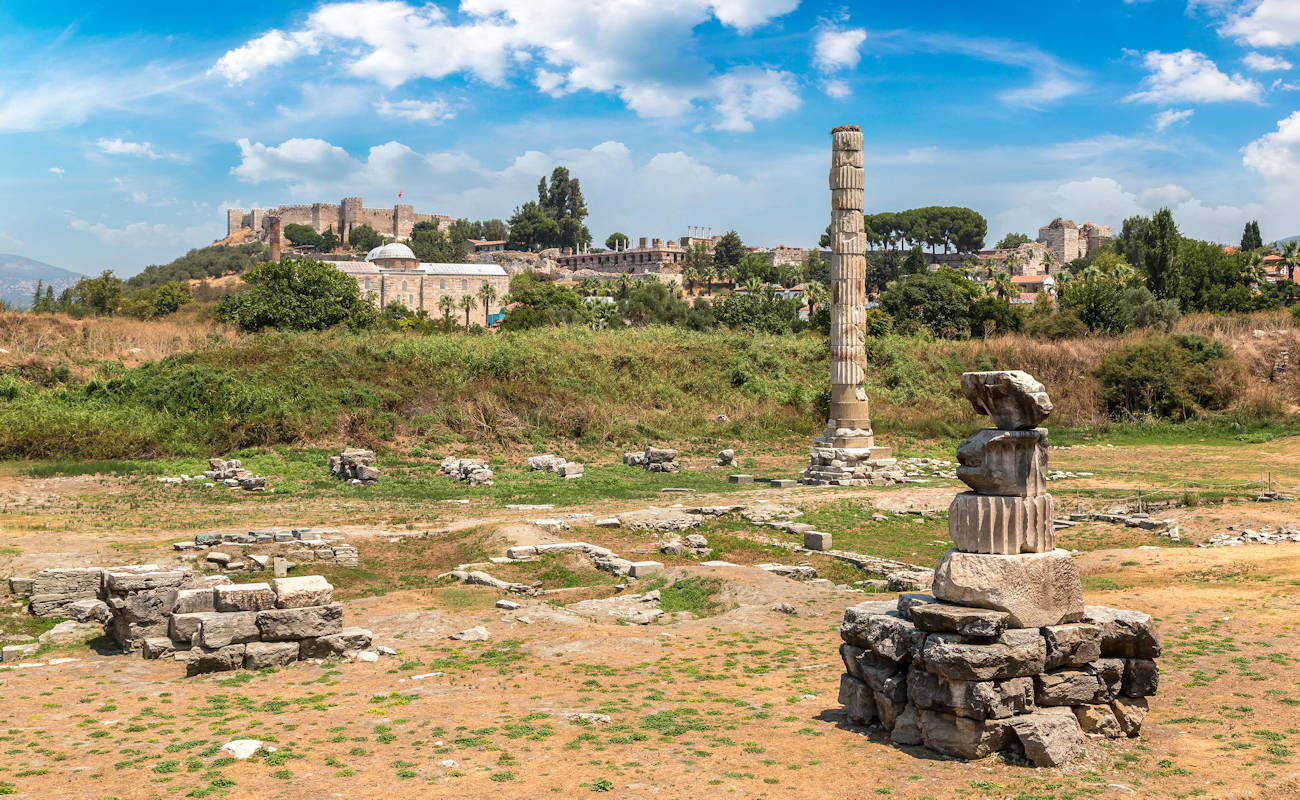
Ephesus Temple of Artemis: A Marvel of Antiquity
In the annals of ancient history, few structures have captured the imagination quite like the Ephesus Temple of Artemis. Revered as one of the Seven Wonders of the Ancient World, this monumental edifice was a testament to human architectural prowess and devotion to the Greek goddess Artemis. Situated near the ancient city of Ephesus, in modern-day Turkey, this temple stood as a symbol of power, piety, and the eternal pursuit of beauty and excellence. This article delves into the history, grandeur, and legacy of the Temple of Artemis, a marvel that has left an indelible mark on the pages of history.
Historical Significance
The history of the Temple of Artemis dates back to the 6th century BC. It was dedicated to Artemis, the Greek goddess of hunting, wilderness, and childbirth. Ephesus was renowned for its devotion to Artemis, and the construction of her grand temple was an expression of this deep-seated religious fervor. The temple’s foundation is credited to the Lydian king Croesus, and it was later expanded and enhanced by successive rulers and architects.
Architectural Marvel
What truly set the Temple of Artemis apart was its remarkable architecture. The temple was colossal in scale, boasting over 100 majestic columns, each standing approximately 40 feet in height. The temple was designed in the Ionic architectural style, characterized by its graceful columns with ornate capitals. The sheer size and splendor of the temple’s structure inspired awe and admiration in all who beheld it.
Cultural Significance
The Temple of Artemis was not only a place of religious worship but also a hub of cultural and commercial activity. Ephesus, being a major city of the ancient world, attracted pilgrims, traders, and tourists from far and wide. The temple served as a center for economic transactions, festivals, and communal gatherings, fostering a vibrant atmosphere that contributed to the city’s prosperity.
Destruction and Rebirth
Throughout its history, the Temple of Artemis faced several trials. It was destroyed by arson in 356 BC by a man named Herostratus, who sought to immortalize his name by razing this marvel. However, the temple was rebuilt even more splendidly by Alexander the Great and continued to be a celebrated sanctuary. Later, it fell victim to wars and earthquakes, and by the 5th century AD, it was in a state of disrepair. The temple’s final demise came with the decline of the Roman Empire and the spread of Christianity, which led to the cessation of its worship.
Legacy and Rediscovery
Despite its eventual destruction, the Temple of Artemis lives on through its historical and cultural legacy. It inspired numerous ancient writers, including the likes of Antipater of Sidon, who compiled the list of Seven Wonders. The temple’s grandeur and significance continue to captivate the human imagination, as it serves as a testament to human ingenuity and devotion to the divine.
Modern-Day Exploration
Today, the site of the Temple of Artemis is marked by a few scattered columns and ruins, far removed from its former glory. Nevertheless, it remains an essential destination for tourists and history enthusiasts. Visitors can walk among the remnants, imagining the grandeur that once was. The nearby Ephesus Archaeological Museum also houses artifacts and sculptures related to the temple, further enriching the visitor’s understanding of its historical context.
In Conclusion
The Temple of Artemis at Ephesus was more than a mere structure; it was an embodiment of human aspiration and reverence for the divine. It stood as a beacon of beauty and grace in the ancient world, drawing people from diverse backgrounds to marvel at its splendor. Today, it stands as a testament to the enduring power of human creativity and the eternal quest for the divine in the heart of the ancient city of Ephesus.
